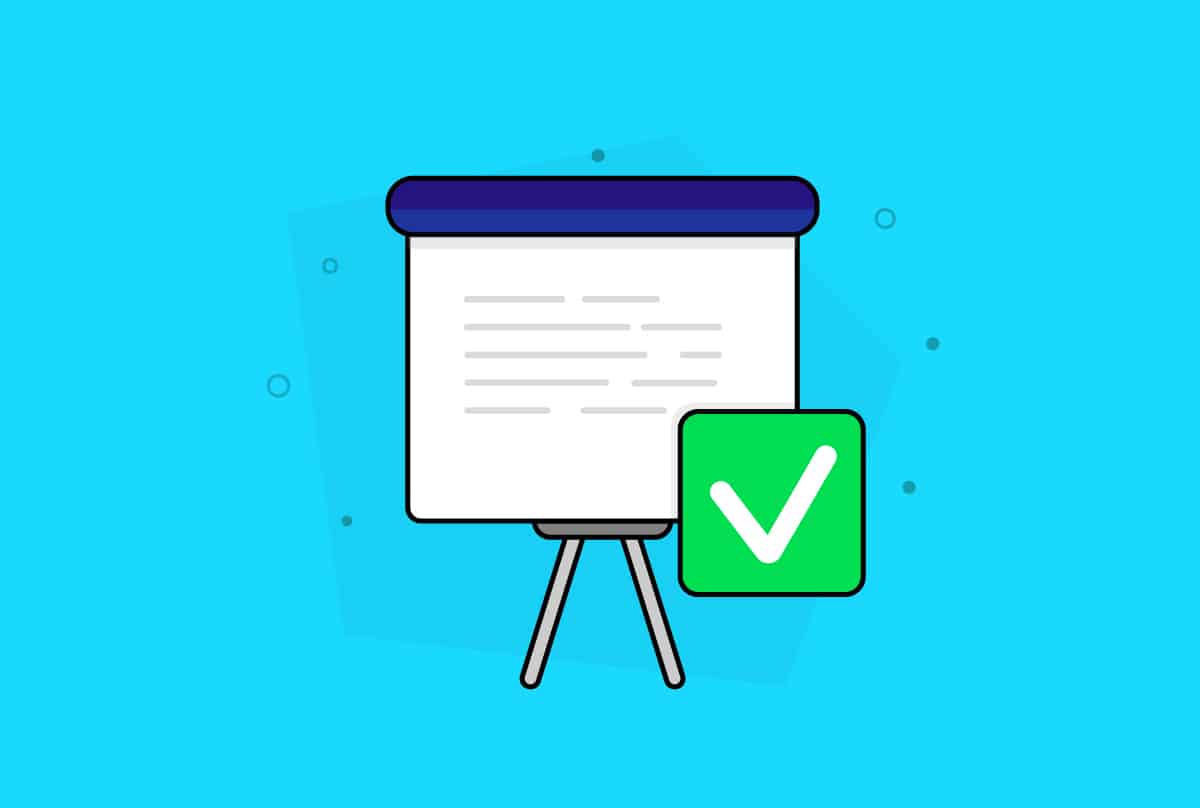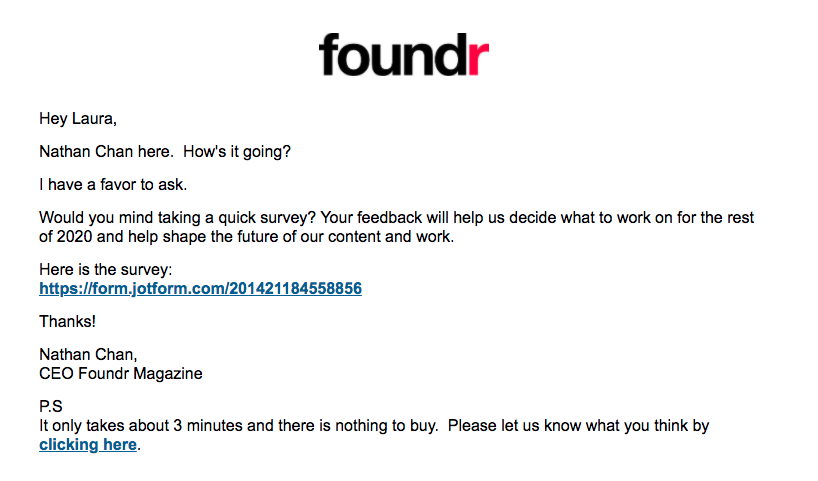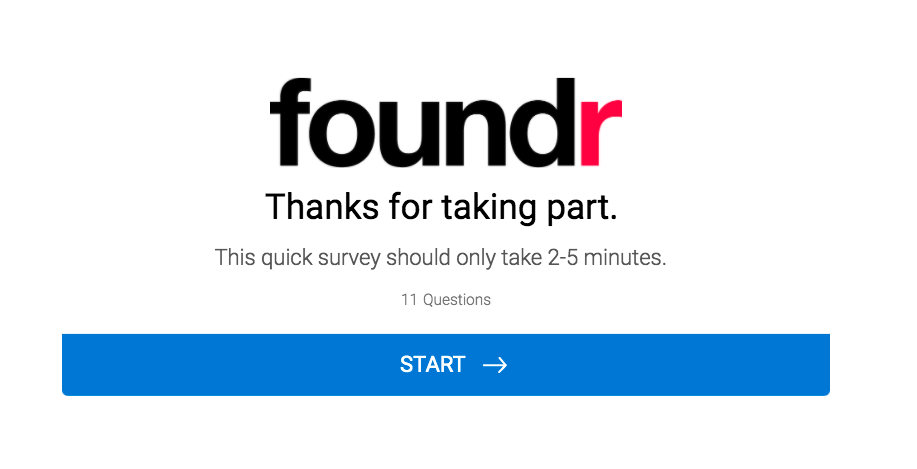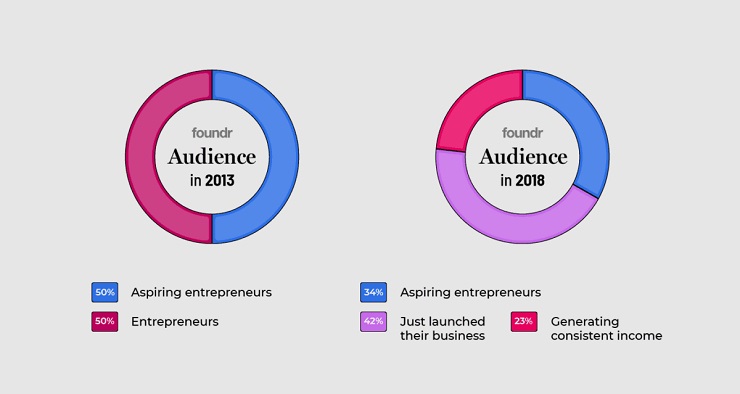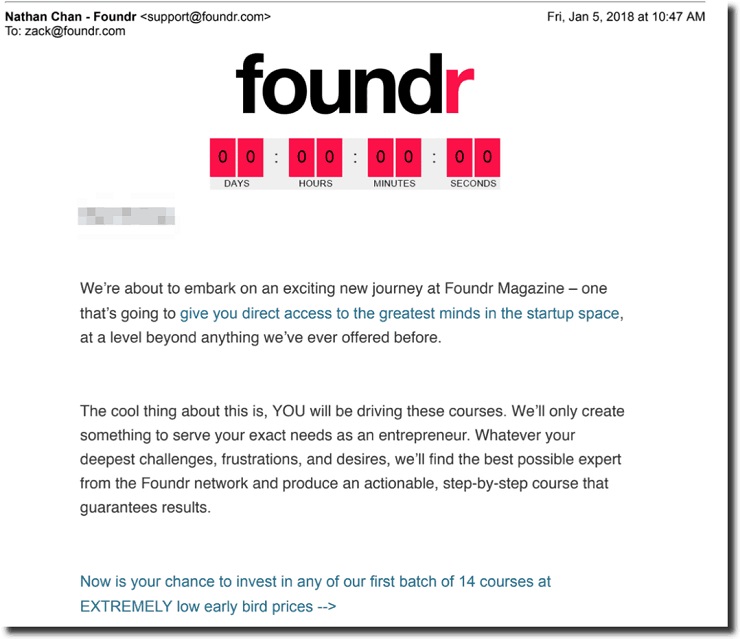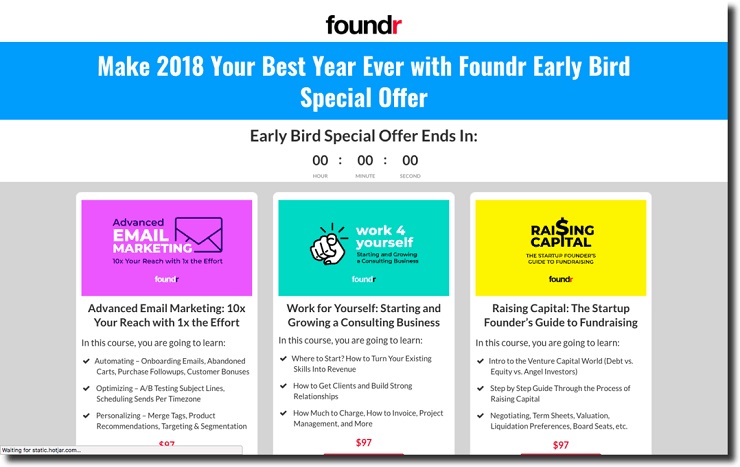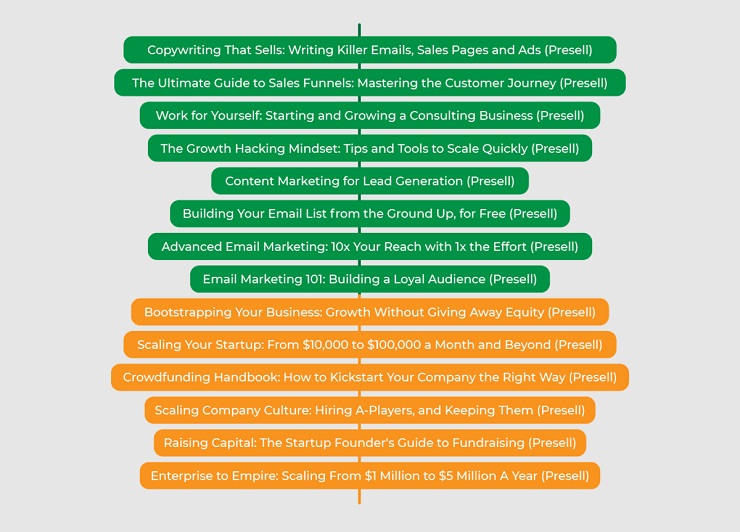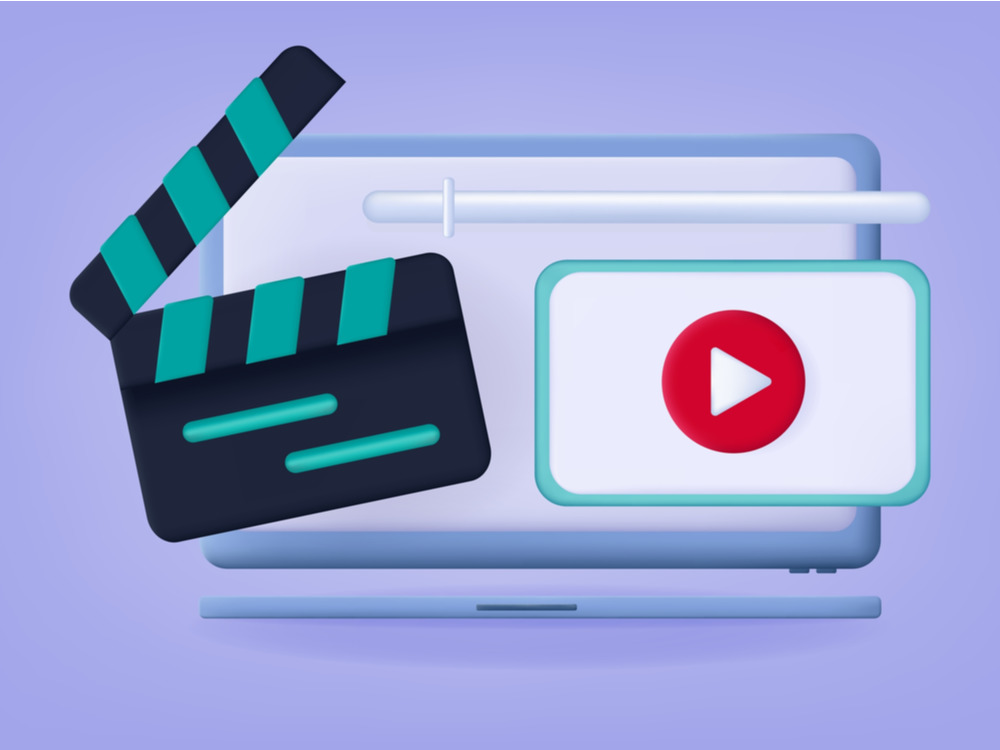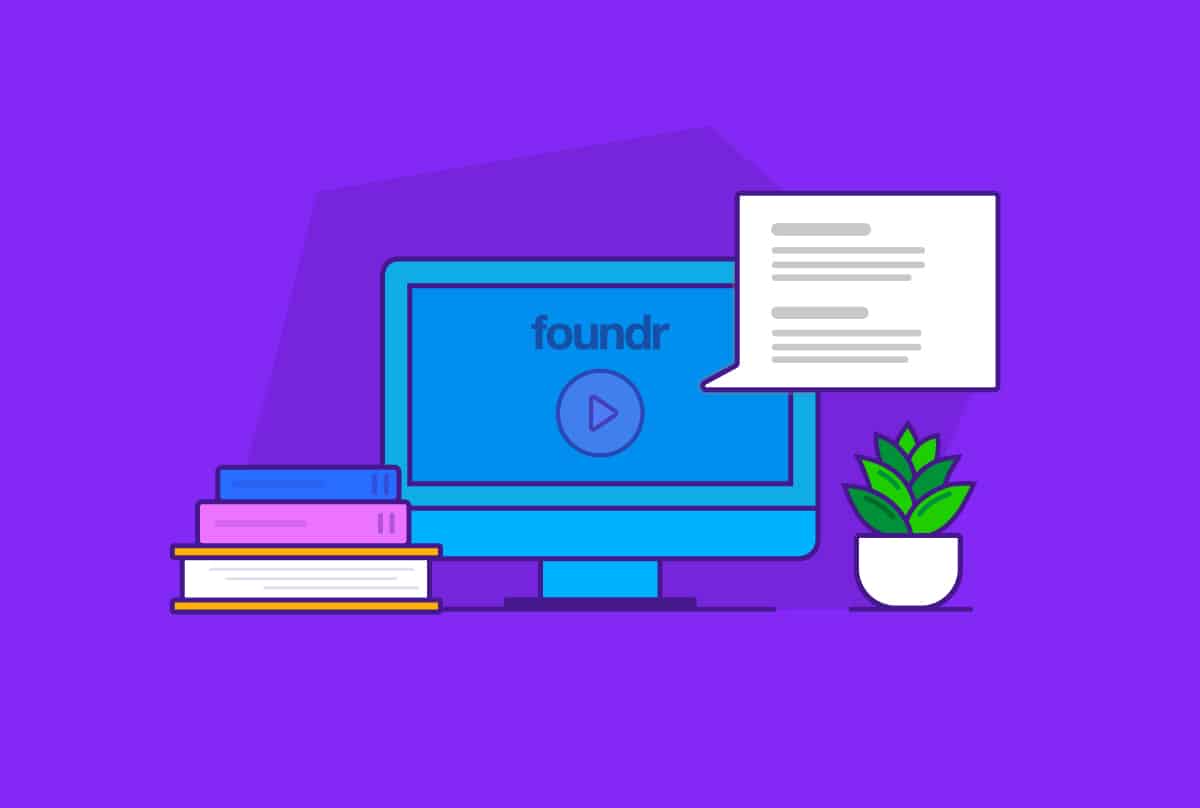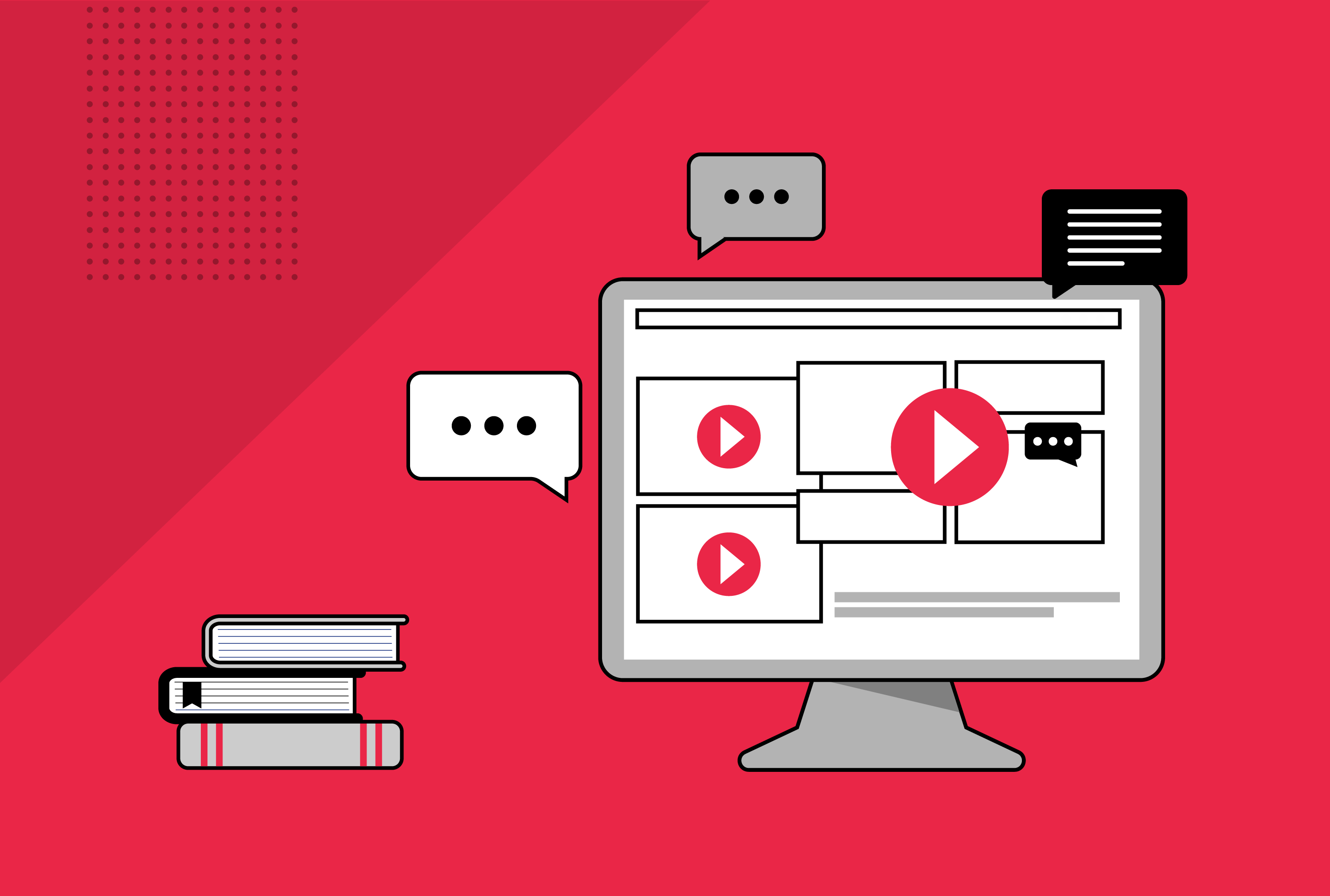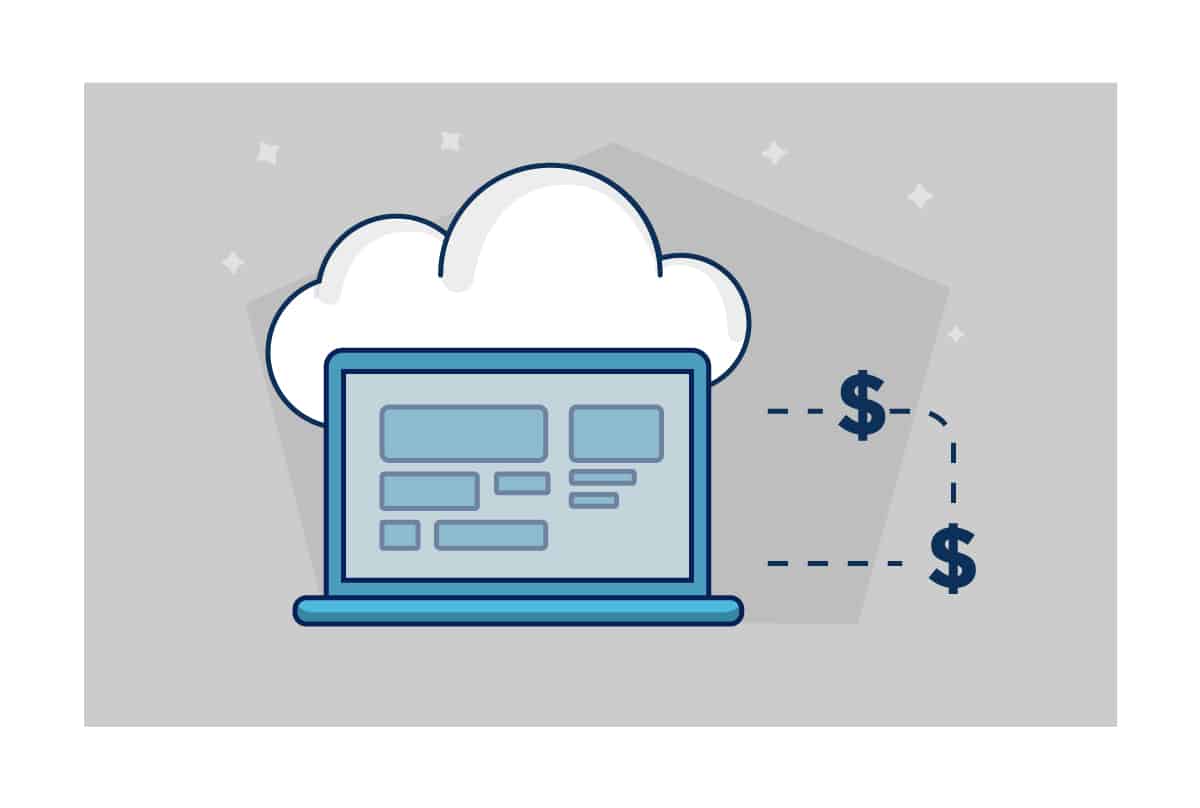Before you launch your online course, you need to validate it.
Here at Foundr, We validate our online course ideas long before we start developing them.
We launch online courses because of our core mission: to democratize entrepreneurial education and impact 10’s of millions of people every week and help entrepreneurs build and grow successful businesses.
Education is the main road we take to fulfill that mission. That’s why we publish multiple in-depth, actionable articles on the blog every week. It’s also why we have a podcast and a digital magazine where we spotlight some of the world’s most influential entrepreneurs and business leaders.
Our premium courses play a key role in this mission as well. While 90% of our education is free, our paid courses let us take you by the hand and teach you the remaining, crucial 10% that will help you get on your feet and then cross the finish line.
Just as we’re methodical in the way we produce our blog and podcast content, our course creation is similarly rigorous. When we decide to create a particular course, we don’t pick an idea out of thin air. We don’t guess. We don’t hope either.
So today, we’ll reveal the exact, three-step process we used to validate our course ideas and ensure they will be hits from the very start. We will be examining how we developed our courses in 2018, and we still continue using this method today.
READ MORE: Are You Ready For A Digital Product Launch?
Why Validation Matters
To become a Navy SEAL, every applicant must experience over 70 weeks of one of the most brutal selection processes there are. The goal isn’t to make a soldier suffer; the goal is to separate the weak soldiers from the strong ones.
Whenever an admiral must deploy a SEAL unit, they must be assured these soldiers will perform at their best. There’s no guessing. They train and select the best, and once they are ready to go, they perform as expected.
Our validation process works the same way. We can’t launch an online course to an audience and hope it will survive on its own. Many new entrepreneurs make this mistake, and it all starts with the well-intentioned but incorrect concept that a good idea is all that matters.
The solution to this problem is validation. Validation is the process of finding qualitative and quantitative data to gauge the interest of your audience.
In the simplest terms, you go out into the wild to learn how potential customers behave, looking to discover their needs and problems, and getting hints of possible solutions that you then use to create a product or service.
The keyword here is hint. Just as you will never find the perfect online course idea, you will never know the perfect solution for your audience. What you will get from validation is enough data to know you are solving a real problem people have.
While it takes more than validating an idea to launch a successful business, it’s a mandatory step you need to take.
READ MORE:How to Create an Online Course Like Foundr
Foundr’s 3-Step Process for Validating Online Course Ideas
The goal of our validation process is simple: We want to find the main painkillers our audience needs to acquire the necessary skills to start and grow a successful business.
Our intention is to use the tested editorial process we use in our magazine, blog, and podcast to identify the best experts to teach you what you need to know and become a better entrepreneur.
Here are the three steps we have taken to validate each of the courses that we’ve either launched already or are planning to launch in the year ahead.
Step 1: Survey
Any good validation system starts with a survey, or a similar qualitative tactic, like phone calls, one-on-one interviews, or focus groups.
In our case, when we set out to pick our 2018 courses, we started by sending a survey asking our subscribers list what subject matter they would be interested in learning more about.
We didn’t indiscriminately send our survey email to everyone. Rather, we segmented our audience, only messaging subscribers who fit the following criteria:
- Engaged contacts (e.g., people who have opened and clicked through our emails in the past 60 days)
- Purchased something from us in the past.
Our email was designed with the goal of getting them to participate in our course creation, and help determine where the Foundr team should focus our efforts in 2018 to better serve our community. We didn’t overcomplicate the copy or design, and we made the survey link the centerpiece of the email.
Once they joined the survey, we asked eight questions using Typeform. We defined these questions with the intention of:
- Getting to know them and learn what stage they were at
- Finding out their goals
- Digging into their problems, business challenges, and pain points
- Getting a deeper understanding of what they wanted
We asked:
- Which of the following best describes the stage of business you are currently in?
- Imagine that it’s one year from now. What do you think must happen in your business for you to be pumped with your progress? Please be specific.
- What would it mean for you to achieve those goals over the next year? Why are these things important to you?
- What are your greatest challenges or frustrations when it comes to reaching your most important business goals?
- How difficult has it been to find help overcoming these challenges?
- How do you prefer to consume content and learn?
- Have you invested in any Foundr Products (Magazines, Courses, Memberships or Books?)
- If you have invested in any Foundr products what are they?
- What kind of courses, programs, or services (topic and format) would you be most likely to invest in the next 90 days to help you launch and grow your business online?
You can see that at no point did we ask, “What topics do you like the most?” or “What’s your goal?”
As the famous quote (it seems incorrectly) attributed to Henry Ford goes, “If I had asked people what they wanted, they would have said faster horses.” That doesn’t mean you shouldn’t seek audience input. After all, that’s exactly what we’re doing during validation.
But the key to finding a potential online course idea, or any product, is to uncover the problems of your audience. While you can be direct in the way you position your questions, you also need to let them express themselves freely so you can read between the lines of their answers.
In the first five questions of our survey, we focused on their challenges and the ways they described success; we wanted to know the exact words our audience uses to describe it.
While in the first and fifth questions we gave them a list of options from which to choose, the others were intentionally structured so they could express themselves freely.
The rest of the survey focused on the type of content they liked the most and whether they had made any previous course purchases. Our intention was to check if they were willing to invest in their education, which pre-qualifies a potential customer.
The answers we got were highly enlightening. For example, in the last question about courses, programs, or services they’d likely pay for, we got the following answers:
- “Copywriting for Ads, Landing Pages, Sales Pages”
- “How to grow a social media presence and gain followers in 2018 without tactics like follow/unfollow.”
- “Something about funnels and conversions.. marketing. All formats.”
- “How to begin a consulting business”
- “A continuation of Start & Scale“
- “For now, mentorships and growing a business to 6-7 figures. But more a systemized approach.”
- “Step by step guide to starting and launching an information business. Content creation courses, and social media courses.”
These answers ranged from specific and concrete to more expressive and vague. In each case, we could get to understand their problems and the ways they face them.
To launch a product or service to a warm audience, you first need to get inside their minds. Asking the right questions is the fastest way to do so.
READ MORE: How Foundr Created it’s First Product Launch
Step 2: Analyze Responses and Find Ideas
Once we have surveyed our list, we started reading each and every reply. This is a highly time-consuming process, but it’s worthwhile to take it all in and start to spot patterns. Once you’ve read through them all, there are some tricks to parsing the data.
For example, you want to compile all of the responses into a spreadsheet, so you can use the old Command + F shortcut to find common threads.
In our case, after a quick search for the word “consulting” in the spreadsheet, we were able to see that this term showed up 40 times out of 400 answers, proving that more than 10% of respondents were interested in a course on building a consulting business.
This course was one of the first that we produced immediately after the survey, which was a massive hit that has already generated thousands of new clients for students.
What makes qualitative tactics such as surveys effective is the ability to read the exact words people use to describe their problems. Not only can you learn a lot from individual answers, but you can also find subtle messages appearing throughout the responses.
Imagine a subscriber saying, “I’m so frustrated by the lack of opportunity to find a job that fulfills me.” What can you extract from this answer?
The first and most obvious would be that she wants to quit her job and either find a new one or perhaps even start a business. If you are looking to launch an online course about a similar topic, such an answer seems to confirm your idea. But there’s more to it.
What you can also extract from that answer is that the person is upset, she feels she’s being denied opportunities to become something more than whatever she does for a living. Her goal in life is to do something that fulfills her. Most importantly, she said to “find a job,” not “do something that fulfills me.”
Such subtle phrasings behind one simple answer let you uncover potential angles for your course (e.g., “How to find work opportunities to live a fulfilling life”), ideas to promote your course (e.g., partner with self-help sites that talk about life fulfillment), and much more.
Because our survey allowed our audience to write their answers out and explain them as much as they wanted to, we were able to find many of these subtle points.
For example, our survey helped us uncover a pleasant surprise: Our audience has shifted, and is now made up of more new and experienced business owners than aspiring entrepreneurs.
Ever since we launched Foundr, we’ve worked extremely hard to teach people how to become successful entrepreneurs. A few years ago, we surveyed our audience and found that almost half were aspiring entrepreneurs. Now, in contrast, we found 42% had just launched their businesses, 23% were generating consistent income and were looking for help with growth, and only 34% fit the “wantrepreneur” camp with the goal of launching their first businesses.
Just check out this audience data we collected spanning 2013 and 2018.
Our survey results also showed us that people were interested in 14 different topics, including:
- Landing page optimization
- Email marketing
- Consulting
- Sales funnels
- Copywriting
- Content marketing
- Funding
Using these results, we spent no more than one week fleshing out the main topics, defining potential course names, developing the main points each course would touch on, and unique angles that would set them apart from the thousands of courses on the internet.
Our designer also created simple logos to represent each course topic so that we could “go to market” with something that looks like an actual product. In some ways, we were creating a series of MVPs (minimum viable products) to test out which ones would resonate with our community the most.
We didn’t invest any money up until this point, The goal was to invite you into being part of our course development process, and figure out how to give you exactly what you want and need. All we did was organize your responses and shape them so they’d be ready for a pre-sale campaign.
READ MORE:The Ultimate List of Every Tool You Need To Create Your Online Course
Step 3: Pre-Sell the Course
Pre-selling is crucial to our validation process.
We can do all the analysis in the world, but if no one shows any real interest in buying, then we know that a given course isn’t the right fit. Sometimes people say they want something, but they’re actually not willing to pay for that solution, so pre-selling lets the truth surface.
We decided to pre-sell our courses at discounted rates to see which ones our community would want to purchase when the time came to launch them.
With all the materials in place, we wrote the email campaign and sent it out—this time, to our full list.
Thanks to steps 1 and 2 of the online course validation process that we’d completed up to that point, we were armed with a shortlist of topics that were specifically requested by entrepreneurs. Now, it was time to see how they would stack up against each other on a leaderboard.
The email led people to this landing page:
We sent three more emails throughout the campaign. The second email advertised the pre-sale again, while the third and final email reminded subscribers of the pre-sale deadline.
We pre-sold our courses at a discounted rate, both to incentivize our audience, and to be fair—we want to reward people willing to take a chance on something that doesn’t exist yet.
The courses that sold the most were the ones we ended up creating this year (albeit with revised titles).
READ MORE: How To Develop An Online Course
Our Online Course Validation Process
In Step 2, we had defined 14 topics in which you said you were interested. We weren’t planning to develop courses around all of them. Our goal was simply to pick the ones with the most interest and focus exclusively on those.
After we launched the pre-sale campaign, we found these were the most successful topics (first eight in green):
Interestingly, we thought some of these topics, like “Bootstrapping Your Business,” or “Raising Capital,” would be much more successful than they were.
Still, we will create courses around the topics that didn’t get as much love. We’ll simply prioritize the first eight, three of which we’ve already launched, and the rest of which we planned to launch in the future.
Even though our goal wasn’t to finance our course creation, but to validate the ideas that had the most potential, with the money we raised from our pre-sales campaign, we were able to finance the first of our courses. On the other hand, we refunded the money to those who pre-purchased the courses that didn’t perform as well, highlighted orange.
The best part of our validation process is that it’s easy to develop. We only used a couple of free tools, like Typeform, Google Docs, Skype, and Slack. The only exception was Clickfunnels, which is a paid tool we used to develop the pre-sale landing page, but this is not essential. You could send an email that leads straight to your surveys.
Once again, the focus of our course validation process wasn’t to make money but to make sure we were investing our money and time helping you learn the skills that you need to succeed.
Each course we create costs between $20,000 to $50,000 in production alone and takes three months to develop from start to finish. We scour the globe to find the best and brightest founder-instructors who are masters in their crafts, and our production team works with them hand-in-hand to design something that’s ideally better than anything else out there on that particular subject.
We take your entrepreneurial education seriously—our online course validation is just one important step in this process.
READ MORE:How to Create an Online Course Like Foundr
Use Our Validation Process for Your Own Course
Our goal is to help 10 million entrepreneurs like you launch and grow 10 million businesses. We will continue to launch courses until we hit that goal. Most importantly, we will continue prioritizing your education as our most important goal.
If you are thinking about launching an online course (or another product or service), think about how you’ve validated your idea. Have you talked to your audience about it? Have they told you they wanted what you are creating (or thinking of creating)?
If you have, kudos! Continue creating your course.
If you haven’t, don’t write anything else. Start talking to your customers. Since they’re the ones who’ll buy your course, if you create something they don’t want, you’ll not only lose money, you could lose their trust.
Here’s what you need to do:
- Define the 10 answers you need from your audience to understand their pain points.
- Write 8-10 questions (multiple choice and open-ended) that will let you uncover those answers.
- Create a survey with the help of Typeform (you can also use Survey Monkey or Google Forms).
- Promote the survey with one email (if you have a lively social media following, use it as well)
- Analyze the results and take notes from what you learn
- Set up a pre-sales campaign to find out what courses your audience prefers and will buy
- Create a course based on the problems you find and the courses your audience pre-purchased
Creating an online course isn’t hard; what’s hard is creating one that people want to pay for. With the three steps we shared here, you’ll be much closer to hitting the six-figure range soon.
Now we want to hear from you. Are you considering launching a course soon? Have any questions or concerns about validating it first? Let us know in the comments!
